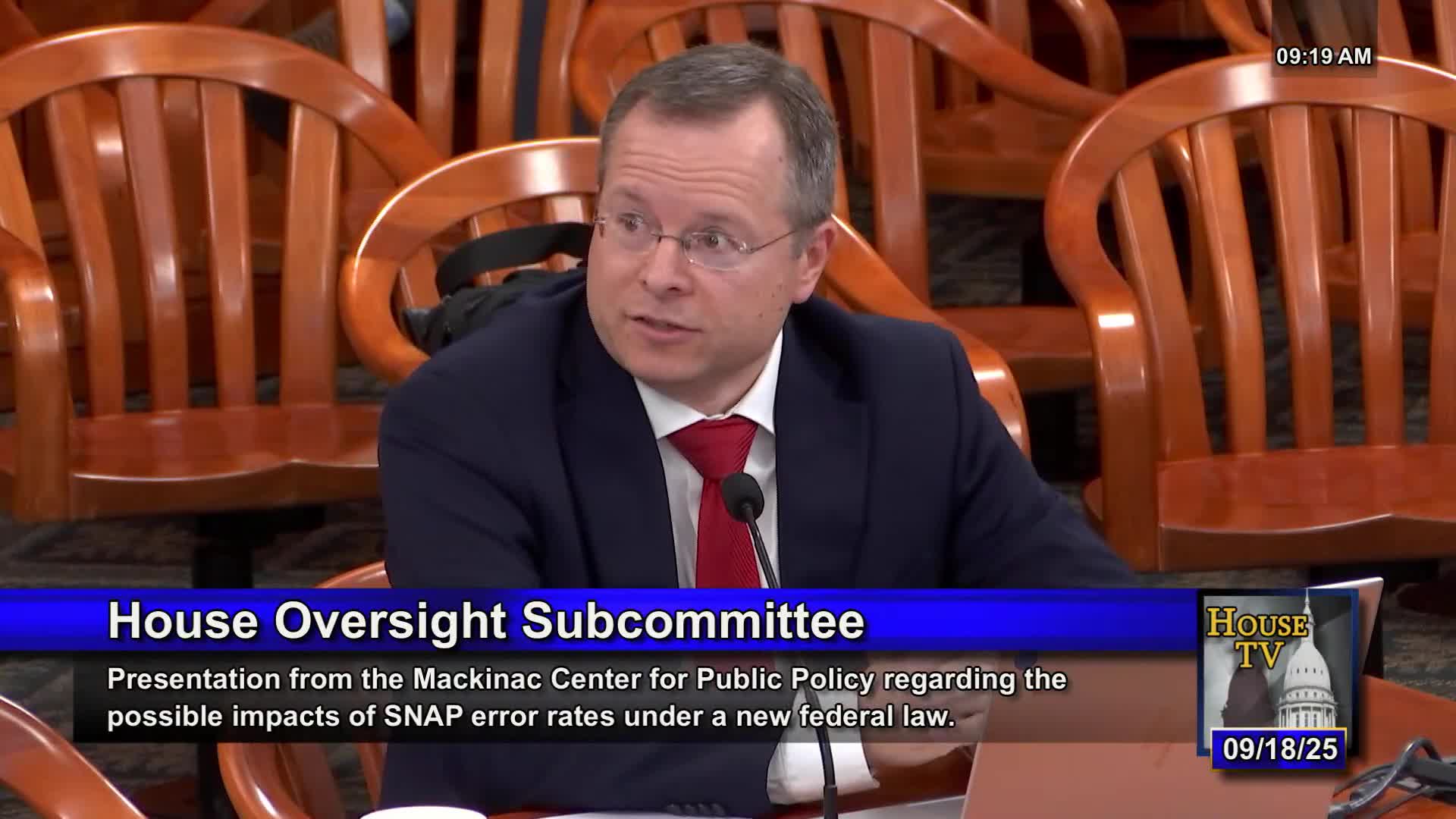State Reports Progress in Reducing SNAP Error Rates Amid Great Lakes Comparisons
September 19, 2025 | 2025 House Legislature MI, Michigan
This article was created by AI summarizing key points discussed. AI makes mistakes, so for full details and context, please refer to the video of the full meeting. Please report any errors so we can fix them. Report an error »

Michigan's Oversight Subcommittee on State and Local Public Assistance Programs highlighted significant progress in reducing SNAP error rates during their recent meeting on September 18, 2025. The state's error rate has dropped from 13% in 2022 to approximately 9.5% in 2024, marking a notable improvement. However, Michigan still lags behind the Great Lakes average, primarily due to Wisconsin's impressive reduction to around 4%.
The discussion emphasized the need for Michigan to closely examine Wisconsin's strategies, as both states share similar demographics and urban challenges. While Michigan's overpayment issues remain a concern—five times more prevalent than underpayments—the state is nearing the average for underpayments.
The meeting also touched on historical trends, revealing that error rates were significantly lower in the early 2000s. Factors contributing to the current rates include changes in program incentives and the use of consultants that may not have provided the best guidance for reducing errors.
As Michigan continues to work on improving its public assistance programs, the focus will remain on learning from successful states like Wisconsin to enhance efficiency and accuracy in benefit distribution.
The discussion emphasized the need for Michigan to closely examine Wisconsin's strategies, as both states share similar demographics and urban challenges. While Michigan's overpayment issues remain a concern—five times more prevalent than underpayments—the state is nearing the average for underpayments.
The meeting also touched on historical trends, revealing that error rates were significantly lower in the early 2000s. Factors contributing to the current rates include changes in program incentives and the use of consultants that may not have provided the best guidance for reducing errors.
As Michigan continues to work on improving its public assistance programs, the focus will remain on learning from successful states like Wisconsin to enhance efficiency and accuracy in benefit distribution.
View full meeting
This article is based on a recent meeting—watch the full video and explore the complete transcript for deeper insights into the discussion.
View full meeting
